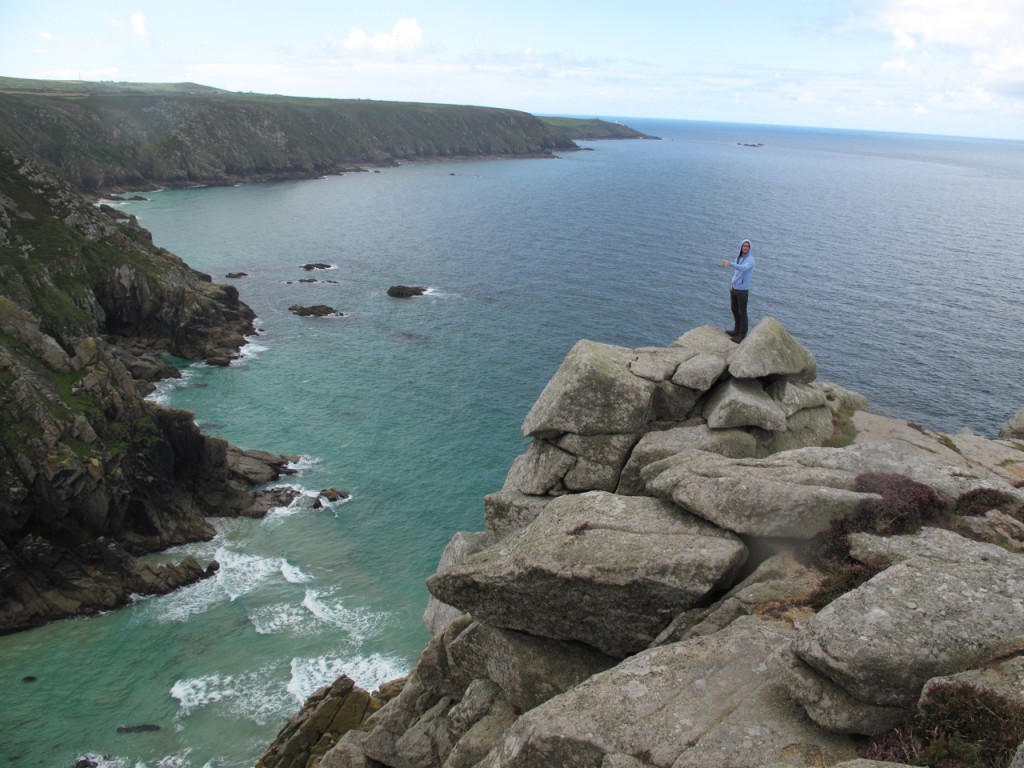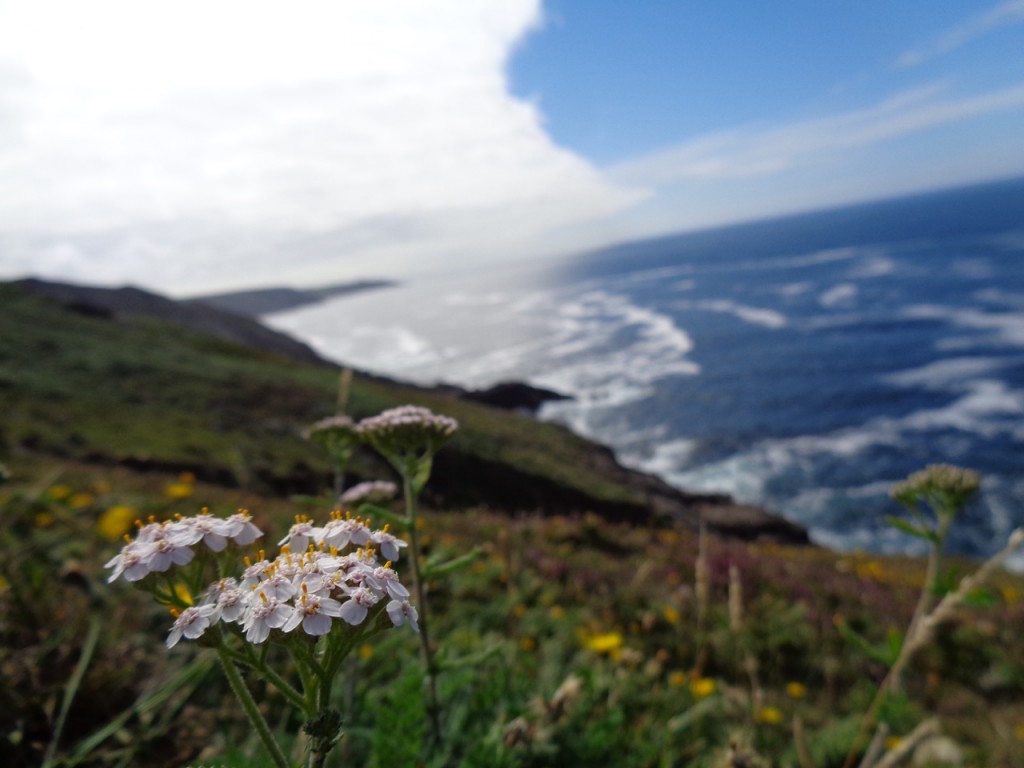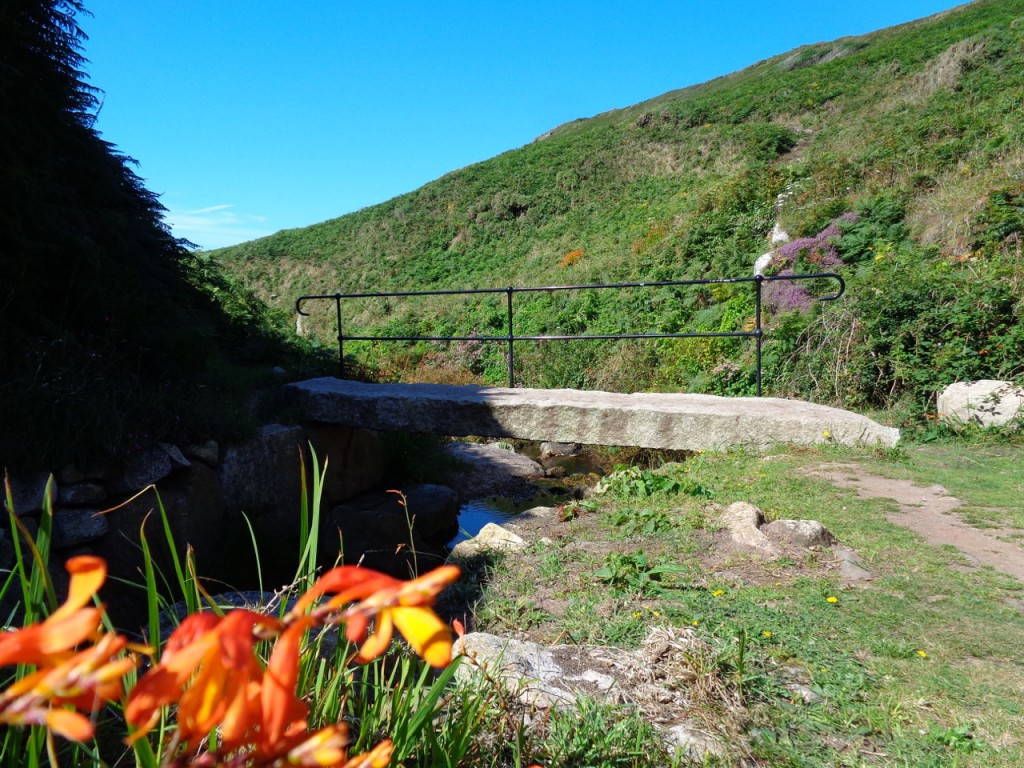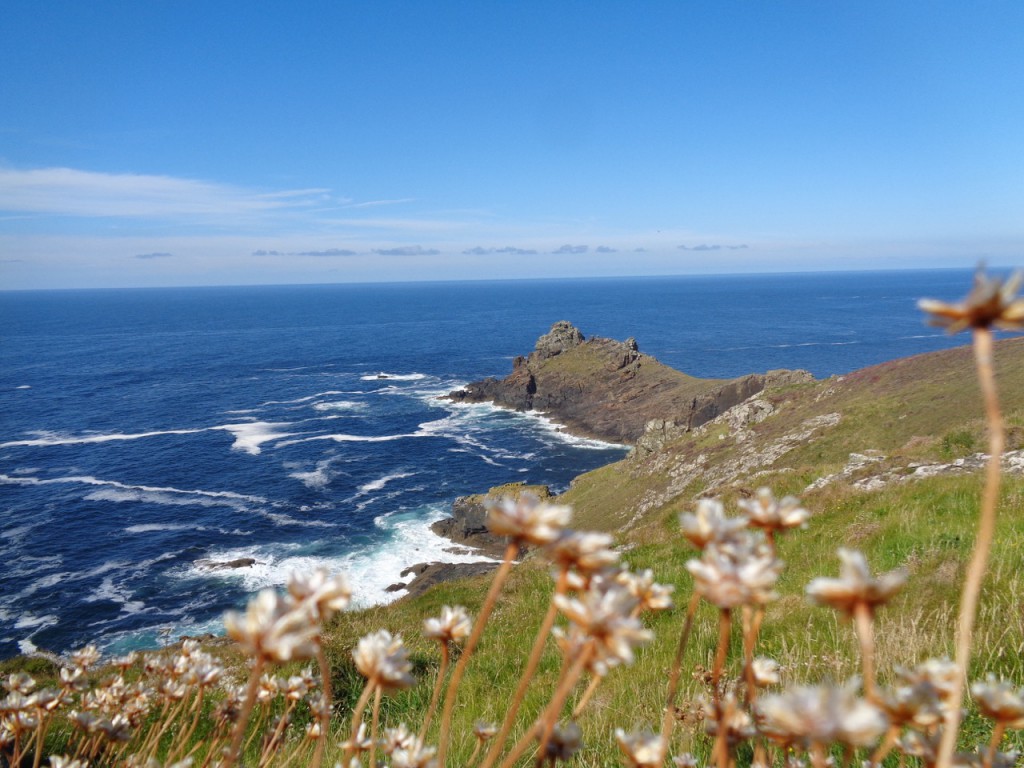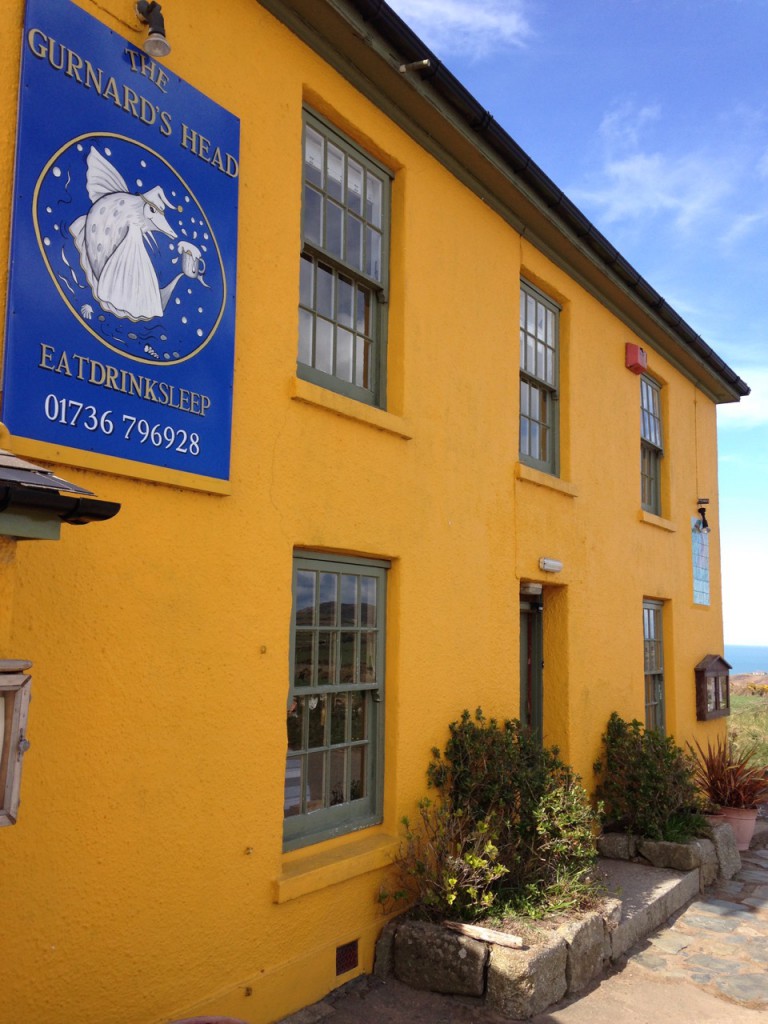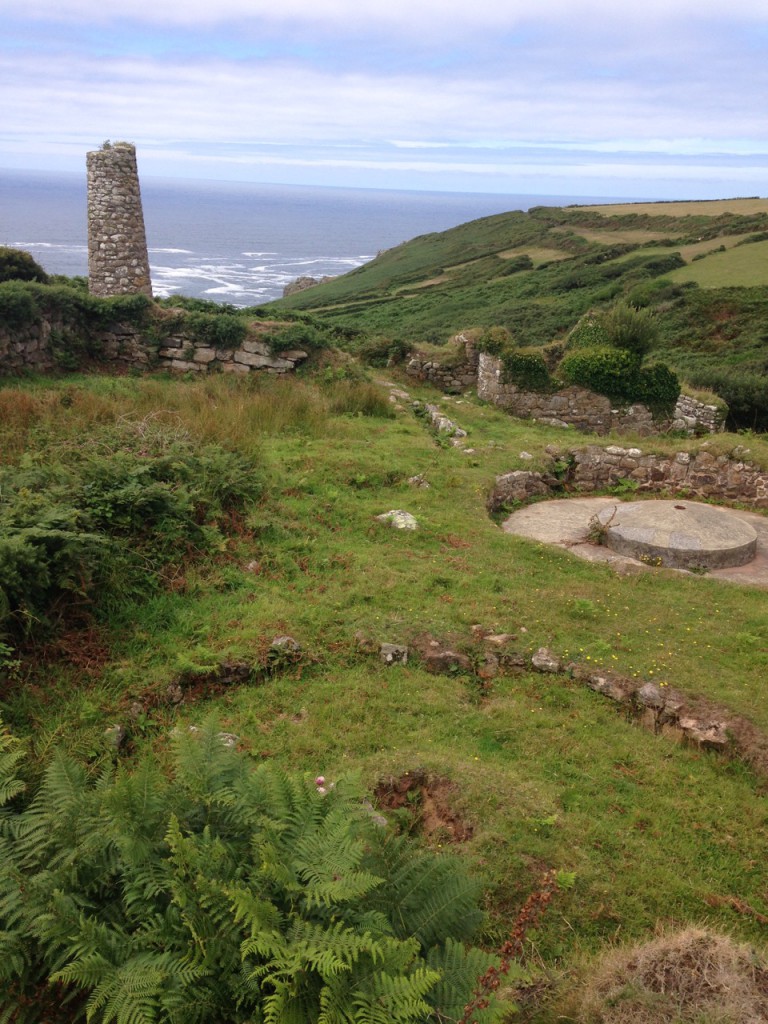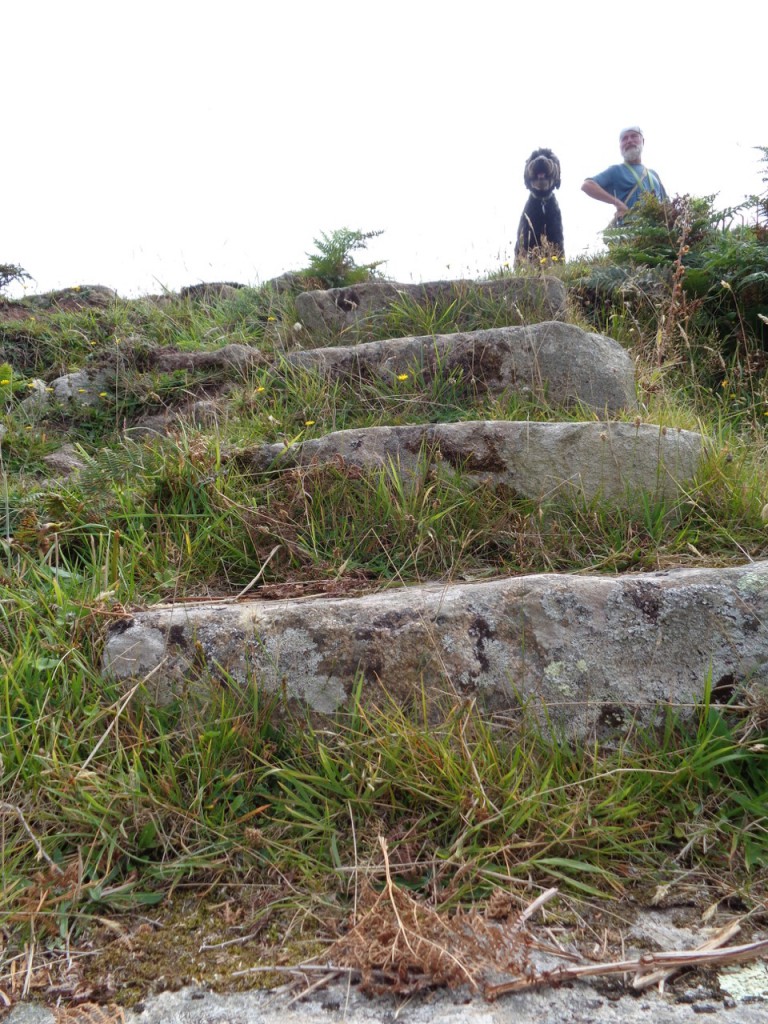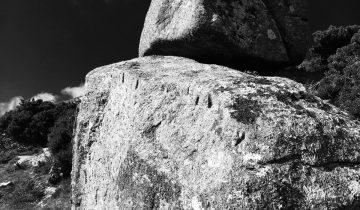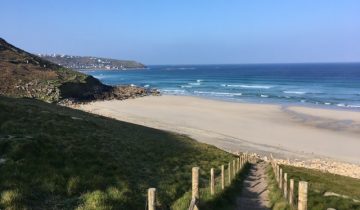Both Bosigran and Gurnard’s Head are worth a visit in their own right, so a circular walk combining the two has to be a winner.
On this walk you get to see ancient field systems and settlement remains, interesting mining remains, and you’ll walk part of the best coastal path, which is full of wildlife. You may see a few seals too.
And better still, after a few hundred yards of either start point, you’ll hardly see anyone else, even in the height of summer.
I suggest parking in the little car park just past Rosemergy (good cream teas there) at Bosigran climbing club, although parking at The Gurnards Head Hotel works well too. Work out where you’d like your refreshment stop and decide from there.
Bosigran Castle
To start the walk head from the car park down the footpath towards the cliffs, heading up to the highest point, Bosigran Castle.
If you’re not short on time detour down to the left to see the stamps of Porthmoina Cove. Stamps are where ore bearing stone was broken down before being fed into the buddles where the heavy tin was separated off.
Way back in the 15th century huge granite blocks were prepared (dressed) here before being shipped to St Ives to build the church tower there – it’s frightening to think of even descending into the cove, let alone working there.
The cliffs at Bosigran Castle have always been special for me, especially as it’s where Amanda and I were married a few years ago. Imagine the surprise of the climbers getting to the top of the cliffs and seeing our group of friends in their finest threads, with our friend and priest Mandy Beck reading the blessing for our nuptials!
No one can be sure if there was ever a castle here, but it’s likely that this was a Neolithic sacred site, and the rampart the cliff top was enhanced with is still clear to see. Long before I took Amanda there for the first time I thought this a most romantic and beautiful spot – even when there’s a gale howling through.
After spending a while taking photos on the cliff tops find the cliff path heading east. The coastal stretch is the hardest bit, and a good reason for parking at Bosigran, you get it walked while you’re still fresh and keen.
The remains of field systems that you’ll now walk through probably date from as far back as 1400 BC. There’s talk around these parts that the area contains some of the oldest surviving remains of man’s building anywhere on the planet, it’s a good claim, after all, who can remember?
If I was better informed on the flora I could impress you with a list of all the beautiful flowers we saw on the walk, you’ll just have to do it yourself and report back to ease my ignorance.
The last cove you’ll pass is Porthmeor Cove, I have had a swim here, but getting in and out isn’t easy across the boulders. Look across from the west side at the interesting lighting flashes of granite breaking through the slate on the opposite cliff.
Gurnard’s Head
As soon as you see a picture of a gurnard you’ll know why the headland is so called. The poor thing isn’t a pretty fish. The headland once was home to a colony of 18 round houses protected by ramparts, and more recently a wonderfully located coastguard’s hut – if you clamber around the nose you can stand on its concrete platform. If it was to be abandoned today I’m sure the National Coastguards could fetch a pretty price by putting it up for sale.
Treen Cove once housed that other local source of work and wealth – a pilchard fishery, and the fish were pressed, salted and packed in the Treen Cove pilchard cellars on the nearby Lean Point.
After you’ve absorbed as much beauty and culture as your time will permit, head inland and up the steep hill through the hamlet of Treen to a very different favourite point of this walk. The Gurnard’s Head Hotel. It’s not cheap, but it is usually good. If you fancy a meal it’s worth booking in advance.
After a sup head carefully along the road in the St Just direction for a couple of hundred yards looking for a stile that will take you into a field with a large standing stone (menhir) in the middle. Cross the field keeping to the hedge on your left and then cross the stiles and gates through the farm buildings, picking up a distinct path ahead between hedges soon climbing up hill with the excellent Porthmeor Stamps on your right.
It doesn’t take too much imagination to picture the industry taking place here. There are three buddles, the round separating tanks for the tin ore, the remains of the calculating chimney, and the burning house where the arsenic and other nasty impurities were burnt off. I can’t imagine the smell here in the 1860s would have much resembled the purity here today.
Follow the path through Bosigran Farm and on to the climbing club house, once the count house, and you’ll be back to the car park and ready for a rest.
Including lunch and many photo opportunities this walk took us three and a half hours. The distance was about four and a half miles, so slow going, but that’s with lots of view admiration and a decent picnic.
Thanks to Robin Bates and Bill Scolding whose book of walks inspired and informed this wonderful seaside stank. Their book is most informative and if I had it to hand this blog would be a lot better!
